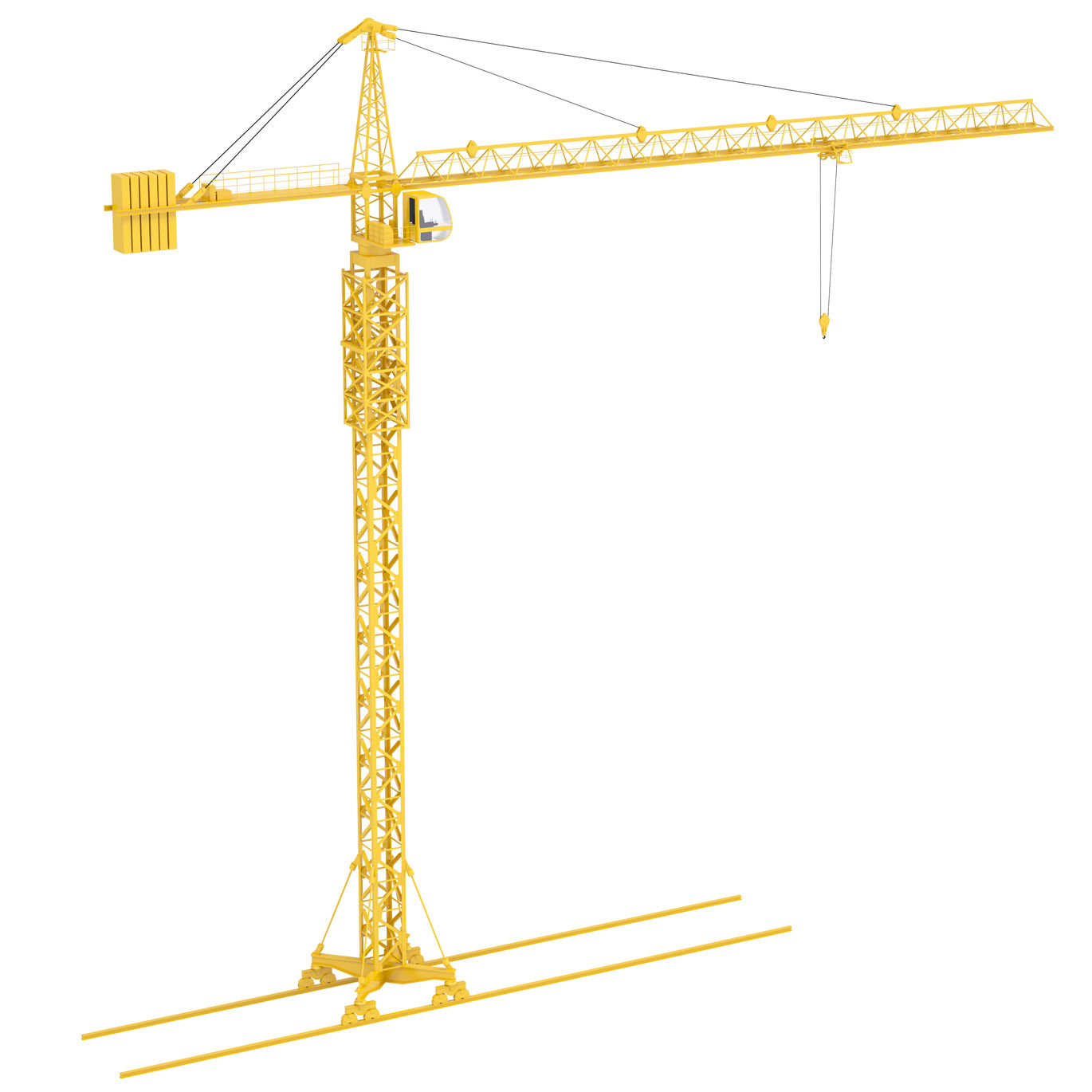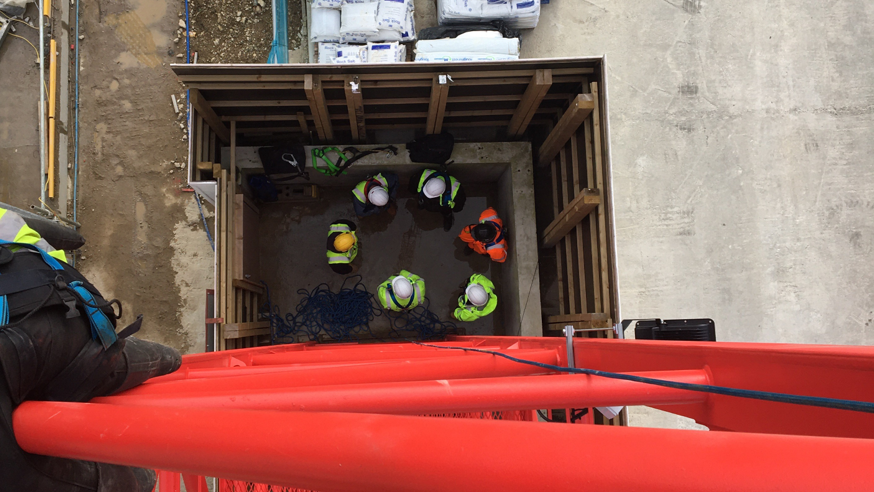Latest News
ESS Guide to Tower Crane Rescue
Posted on Friday, 11th June 2021

It is vital for anyone working as a tower crane operator, or authorised to enter or work on the cranes structure, to be aware of their companies’ tower crane rescue plan and how to implement it. These safe systems of work can be the difference between life and death in the event of someone falling from height, hurting themselves or becoming ill while working whilst on or operating a crane. In this blog we look at when tower crane rescue is needed and what rescue plans involve.
What is a tower crane?
Tower cranes are large machines which are used to perform lifting operations on major construction sites. They are a frequent sight in city skylines as they are used in pretty much every large-scale building operation.
The ‘tower’ in the name refers to the large vertical structure the machines that stabilises the machine whilst the slew at the top of the tower allows it to pivot around and lift objects across a large area of site. This mechanism allows tower cranes to move incredibly heavy objects and materials around building sites with relative ease and minimising the disruption for ground-level workers.
How do tower cranes work?
 There are several different types of tower cranes which all have their own advantages and uses. These all work in slightly different ways in order to be used on different types of building sites.
There are several different types of tower cranes which all have their own advantages and uses. These all work in slightly different ways in order to be used on different types of building sites.
- Hammerhead Crane – The most common type of tower crane featuring a vertical mast with a horizontal jib (pictured).
- Luffing Jib Tower Cranes – Also common. Features a diagonal arm at an angle allowing them to fit into smaller spaces.
- Derrick Cranes – Smaller cranes which are usually used in smaller spaces eg. rooftops.
- Self-Supporting Tower Cranes – Shorter cranes where extensions are not needed meaning it can be anchored into one place.
- Travelling Tower Cranes – Track or rail mounted cranes which need to regularly move to cover larger building sites.
- Self-Climbing Tower Cranes – Innovative machines that can be extended by inserting additional sections of tower as the building gets higher.
Are tower cranes dangerous?
Yes!
Working at any sort of height is dangerous, with falls from height being the most common cause of fatal injury on UK worksites. The risks when working on cranes are even greater given the extreme height and the complexity of the systems, machinery and equipment being used.
What are the most common crane hazards?
There are many different hazards that can lead to issues with tower cranes and result in users falling from height, becoming injured or feeling unwell. Normally these result from a lack of experience, training or understanding in using the cranes or safety equipment.
One of the most common causes of accident or injury is a result of mechanical failure. The only way you can be sure that these failures can be avoided is by conducting regular and thorough checks on all the equipment being used. It also requires a deep and thorough understanding from users so they know the what the equipment should be used for and what the limitations of the mechanisms are.
Crane operators need also be aware of the risk of falling loads, where materials fall from height after being dropped by the crane. This could be caused by the machinery being used incorrectly, mechanical failure or the crane being ‘overloaded’ by the weight of the material. Again, thorough knowledge of the equipment and regular inspections are the only way of preventing this from happening.
Another concern when working with tower cranes is collapse. While these are rare, the results can be devastating. In their 2010 RR820 report into tower crane incidents, HSE identified the main two causes of tower crane collapse were erection/dismantling/extending issues and extreme weather.
Any one of these hazards, as well as workers suffering unrelated health issues while working on a crane, can lead to a tower crane rescue needing to be completed.
What is tower crane rescue?
Tower crane rescues are just what they sound like; rescuing a worker who has become suspended at height, injured or ill while working on a tower crane.
When working at height, including on tower cranes, employers must ensure that workers are equipped with functional safety harnesses, fall arrests or fall restraints appropriate for their job. If working correctly, they will prevent workers hitting the ground in the event of a fall from height.
Depending on the nature of the equipment being used and circumstances of the individual who has fallen, become injured or ill, it may be necessary for other workers to retrieve the suspended worker and get them to safe location. This is when tower crane rescue plans come into practice.
What is a rescue plan?
Rescue plans are pre-planned procedures put in place to retrieve someone who is suspended from a safety harness following a fall from height or are injured or ill and cant make their way safely to ground unaided.. These plans need to be thoroughly established by employers to ensure that in the event of rescue, staff are fully trained on what they need to do and how to use their equipment.
In the HSE’s Working at Height guidance, they describe how employers must “agree a set procedure for evacuation…and make sure employees know the emergency procedures”. They cannot rely on emergency services to respond in the event of a fall from height, workers on site need to be able to react quickly and effectively to offer the best chance of survival for the suspended individual.

What work at height requires a rescue plan?
HSE does not provide a specific height that a rescue plan is required from. In simple terms, if employees work above or below ground level then their employers are legally obliged to have a clear rescue plan in place. This makes up part of an employer’s responsibilities under Regulation 4 of the Working at Height Regulations 2005.
While these procedures are important when working at height in any context, it is particularly important when working with tower cranes. This is due to the significant heights involved and complexities of the equipment being used. These rescue plans should factor in the specific dangers of the work site, the cranes in operation and the fall arrest equipment being used.
You can find out more about the legal obligations of working at height in our blog ‘ESS Guide to Working at Height’.
Tower Crane rescue training:
At ESS, we provide expert Tower Crane Rescue training. Our 1-day course provides a practical run thorough of how to establish a tower crane rescue plan, how to use a tower crane rescue kit and provides a detailed breakdown of all the relevant legislation.
These training sessions are conducted on your site. This allows our trainers to provide the best knowledge and information relevant to your working scenario, including the hazards you are likely to encounter and the specifics of the equipment you are using. Upon completion, learners will be issued with an ESS certificate (valid for 3 years) that demonstrates their competence in using the specific rescue kit they have been trained with.
In addition, we also run the Working at Height Rescue Training course. This training covers how to establish an emergency rescue plan for working at height. This will prepare workers for a variety of working at height scenarios such as working on scaffolding or buildings.
Contact us:
If you want to explore our full list of courses, NVQs and apprenticeships, why not head over to our online course index. You can search for specific courses and NVQs using our handy website search function. You can also speak directly to a member of our team by calling us on 0115 8970 529. You can also email us at info@essentialsiteskills.com.


